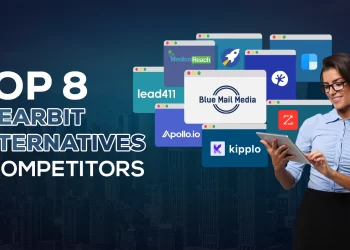For years, brands have been using cookies to track website visitors, learn their online behavior, and send targeted ads. But 2022 is slated to be the year when we’ll say goodbye to third-party cookies. Google plans to phase out third-party cookies on its Chrome browser, and this move has marketers thinking about alternate routes to learn about users and advertise to them. While the end of third-party cookies could create new challenges for marketers, it could also mean new opportunities.
In this article, we’ll understand why third-party cookies are getting canceled and what new changes are on the horizon?
Why are third-party cookies going away?
Third-party cookies are online user identifiers on websites. Stored on the user’s device, these cookies are used to track website visitors for various reasons, including:
- To collect user data
- To improve user experience
- To target ads to the right audience
The third-party cookies allow advertisers to track what users browse throughout the entire web within a specific browser, and that’s where the problem lies. Modern users don’t trust third-party cookies as they have no control over where and how their personally identifiable data is utilized.
With an increased need for privacy, transparency, control, and choice over how their data is used, Google has decided to phase out third-party cookies on their browser.
This move also aligns with the goal of the data protection regulations, including GDPR and CCPA, created over the past five years.
Safari and Firefox have already stopped tracking users via third-party cookies over a year ago, and Google’s chrome will be the third to follow suit.
Google won’t stop tracking entirely.
That’s right. Although the third-party cookies will be phased out eventually, Google won’t stop tracking users completely. Instead of tracking individuals, it will use the FloC technology to track groups of people with common interests. FLoC-based cohorts may soon be available for public testing, and it also plans to start testing FLoC-based cohorts with advertisers by the second quarter.
Will all types of cookies be disabled?
No, not all types of cookies will be disabled. First-party cookies created by the advertiser or publisher will continue to exist as they fulfill many essential purposes, including:
Remembering passwords
Remembering search preferences, recommendations, purchase history, items saved in the cart, etc.
How will the changes affect advertisers?
With all significant browsers doing away with third-party cookies, marketers will have to find newer and better ways to target their audience. The possibility is that non-personalized ads will overflow the Internet, and advertising campaigns may lose their effectiveness. The worst-hit will be the third-party ad platforms that utilize cookies to generate revenue.
A recent survey reveals that marketers anticipate the following impacts:
- 41% say that they won’t be able to track the correct data.
- 44% say that it will have an impact on their budget.
- 23% plan to invest more in email marketing technology.
While many advertisers are adopting the “wait-and-see” approach, for now, the most forward-thinking brands have already started activating first-party user data from their CDP, CRM, and offline contacts in their campaigns to customize retargeting and boost sales.
To remain competitive, the advertisers must start collecting and segmenting user data and find a reliable marketing solution provider to help them adapt to the changes.
What will happen to web publishers?
Publishers may lose up to $10 bn in ad revenue with shrinking ad personalization options. To be safe, the publishers will need to reconfigure their ad and data management approach before this move starts.
Not everything is lost – options available.
Right after Google announced third-party cookies, adtech leaders have started looking for possible alternatives that could replace them. Some possible solutions are:
#1: Solutions without personal IDs
Google has announced its move to focus on cohort analysis for ad targeting instead of third-party cookies.
FLoC (Federated Learning of Cohorts), as we discussed in the above section, will be a more acceptable solution, with several new features you must be aware of:
- Users will be grouped based on similar browsing history
- Data isn’t sent to external servers.
- Groups will be targeted based on the cohorts to which they belong.
- Cohort ID will prevent tracking individual tracking between websites.
- A cohort must include at least 1000 users for it to be targetable.
#2: Universal ID solutions
Another option is alternative ID solutions based on data obtained with users’ consent. Users’ personal data, such as phone numbers and email addresses, are collected and sent to an ID provider that assigns the user an ID. Users’ personal information is encrypted and hashed to maintain users’ privacy.
These single identifiers recognize users in the digital marketing space and allow the information to be passed onto authorized and approved partners.
With the help of universal IDs, users will be identified on various devices and platforms, for example, when they switch from a mobile application to a browser.
Users’ privacy is highly respected in this approach. Google is now exploring giving publishers a way of sharing encrypted signals with their trusted partners.
#3: Google’s Publisher Provided Identifiers (PPIDs)
The publisher assigns an identifier to the user, known as PPID. In 2021, new functionality was launched by Google that enabled publishers to share users’ PPID with partners, allowing the advertisers to deliver personalized ad campaigns while respecting users’ privacy. With the help of this feature, publishers can:
- Create custom audience segments.
- Improve the relevancy of their ads.
- Improve their revenue.
#4 Contextual targeting
When ads are offered based on an analysis of the web page’s contents for phrases and keywords, it’s known as contextual targeting. You don’t need personal data for this type of targeting, but the data passed across by the publisher, like – the time of browsing. Advertisers can leverage this data to target users without stepping the boundaries.
There are several other options available that have been around for a while. On top of that, new technologies are emerging that can help you run profitable campaigns even in the absence of third-party cookies.
Conclusion
If your advertising strategies rely on third-party data, you must start estimating the consequences for your business now and find a reliable solution that will let you maintain the pace of your digital advertising efficiency even in the absence of third-party cookies. A trusted marketing solution provider can help you understand your options and make the right moves to keep up with the changes.







